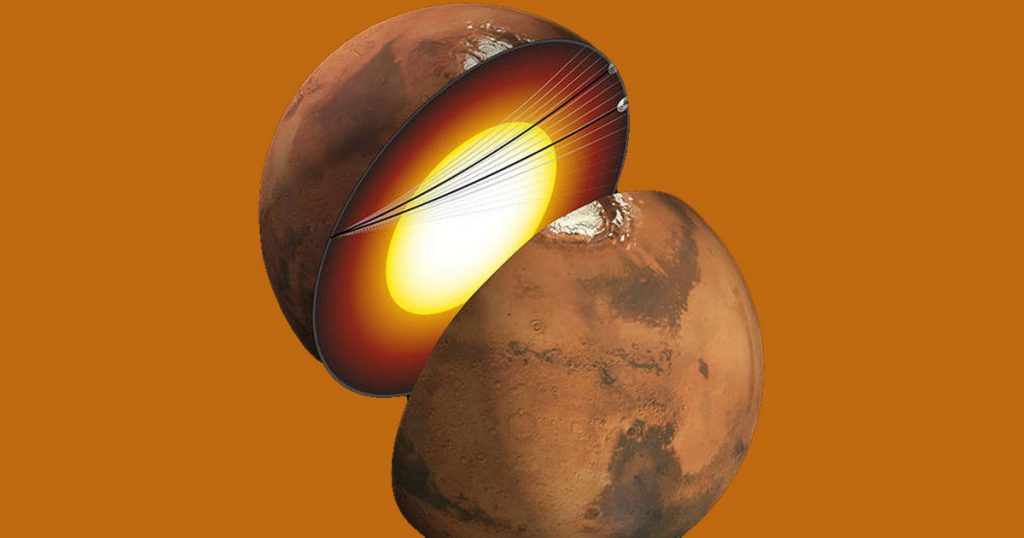A research team from Zurich had a whopping breakthrough! After poring over the data sent back from NASA’s Martian probe, they were able to accurately measure the thickness of Mars’ crust and uncover what generates its internal heat. It’s an incredible discovery!
Doyeon Kim, a renowned seismologist, and her gang of scientists scored some huge seismic data obtained from the InSight lander while it was on Mars. The waves traveled all around the planet three times, giving them an incomparable glimpse into what makes Mars tick. They recently wrote all about it in Geophysical Research Letters – their findings are totally groundbreaking.

The researchers found that the Martian crust was on average between 26 to 35 miles thick, thicker than Earth and Moon. This is because usually the smaller planets have thicker crusts compared to larger ones. What’s more, they found that there wasn’t much of a difference in the crust’s density between its northern lowlands and southern highlands — settling an age-old dispute about Mars’ origins and composition.
Arguably the most captivating revelation of this study revolves around the primary heat source within Mars. The researchers discerned that the planet’s intense heat is largely generated by the gradual decay of radioactive elements, including thorium and uranium, over an extended period. This mechanism bears resemblance to Earth, where the decay of radioactive elements plays a pivotal role in maintaining a warm core. The team estimates that a significant portion of these heat-producing radioactive elements is harbored within the Martian crust. This presence potentially leads to the formation of localized regions of molten material within the planet’s interior.

The implications of this revelation are massive, illuminating the striking likenesses between Mars and our Earth. As well, it unveils invaluable knowledge on how the red planet has evolved over billions of years. Decrypting the inner workings of Martian heat production and circulation is an indispensable part of understanding its geologic puzzles and gauging its habitability for alien life existing now or in times past.
Scientists keep taking us deeper and deeper into the strange unknown of Mars. The findings from this monumental research will steer the course for explorations to come, as we edge closer to unlocking the planet’s mysterious past. Learning more about our red planet neighbor can help us comprehend Earth better and even gain insight into the wider universe.


